What is a Microphone?A microphone is an input device that was developed by Emile Berliner in 1877. It is used to convert sound waves into electric waves or input the audio into computers. It captures audio by converting sound waves into an electrical signal, which may be a digital or analog signal. This process can be implemented by a computer or other digital audio devices. The first electronic microphone was based on a liquid mechanism, which used a diaphragm that was connected to a current- charged needle in a diluted sulfuric acid solution. It was not able to reproduce the intelligible speech. 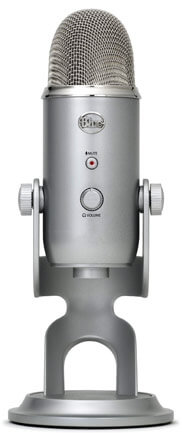
Regularly, microphones are designed on the basis of directionality, besides the type of device. Such as, Omnidirectional microphones are capable of picking up all sounds in an area, but it is unable to focus on a particular subject with background noise. Bidirectional, directional, and shotgun microphones are beneficial for an interview. However, two unidirectional devices can provide the same effect, like cardioid microphones. What is the use of a microphone on the computer?
History of microphoneNowadays, microphones are mainly connected with the music and entertainment fields, but in the 1600s, scientists started to search out how they could magnify the sound. 1665: Until the 19th century, the word microphone was not used. English physicist and Robert Hooke were considered as a pioneer in the field of broadcasting sound across distance, as they developed the acoustic cup and string phone. 1827: Charles Wheatstone was the first person who played a vital role in developing the microphone. Wheatstone was the popular English physicist and creator, who was the best inventor for the telegraph. Basically, he had an interest in various fields and gave some of his time to study acoustics in the 1820s. Wheatstone was one of the first scientists to recognize that sound can be transmitted by waves with the help of mediums. This finding made him curious to find out different ways of transmitting sounds from one place to another over long distances. He worked to develop a device, which could amplify low sounds and named this device a microphone. 1876: Emile Berliner may be considered as the inventor of the first modern microphone. He was best known for inventing the Gramophone and its records. When Berliner saw a demonstration of the Bell company at U.S. Centennial presentation, he was inspired to explore ways to enhance the features of the recently invented telephone. The management of Bell company was impressed with the device he launched with telephone voice transmitter, and Alexander Graham Bell invented the liquid microphone. 1878: After inventing the microphone by Berliner and Edison, a British-American music professor David Edward Hughes introduced the first carbon microphone. It was used as a prototype for many carbon microphones, which are still in use. 1915: Vacuum tube ampli?er was developed to enhance the volume of many devices, including the microphone. 1916: E.C. Wente invented the condenser microphone at Bell Laboratories, which was also known as a capacitor or an electrostatic microphone. Although he had an assignment to improve the sound quality for telephones, his innovations also affected the microphone. 1920s: When radio became the first source in the field of news and entertainment all over the world, the demand for the best quality microphone grew up. Then, the first ribbon microphone, the PB-31/PB-17, for radio was introduced by RCA Company. 1928: Georg Neumann and Corporation was established in Germany and instantly became famous for its microphone. The first commercial condenser microphone was developed by Georg Neumann. It was also known as 'bottle' due to its shape. 1931: In this year, Western Electric marketed its ?rst dynamic microphone, 618 Electrodynamic. 1957: Raymond A Litke was an electrical engineer of San Jose State College and Educational Media Resources. He invented the first wireless microphone that was designed for multimedia applications as well as the radio, television, and higher education. He also applied patent for this microphone in this year. 1959: The first unidirectional device, Unidyne III microphone, was invented to pick up the sound from the top of the microphone, instead of sides. Additionally, this new enhancement specified the modern design for microphones in the future. 1964: James West and Gerhard Sessler received patent number 3,118,022 for an electret microphone, which provided better reliability and greater precision with a lower price and small in size. It changed the microphone field by manufacturing approximately one billion units on every year. 1970s: In this decade, both dynamic and condenser mics were improved more. They offered a clearer sound recording and a lower sound level sensitivity. Furthermore, a large number of mics were also introduced in the 1970s. 1983: In this year, the first clip-on microphone was introduced by Sennheiser, which was designed for the studio (MKE 2), and it was a directional mic (MK# 40). These types of devices are still in use. 1990s: Neumann released a designed condenser model, KMS 105, for live performances that offered a new standard for better quality. 2000s: In this decade, MEMS (Microelectromechanical systems) microphones were becoming more popular with portable devices as well as headsets, laptops, and cell phones. Also, the trend for small size mics was growing up with applications like automobile technology, wearable devices, smart homes, etc. 2010: The Eigenmike was introduced in year 2010, which comprised various types of high-quality microphones. These microphones designed to arrange on the surface of a strong sphere that enables it to pick up the sound from different directions. Present: Microphone technology is developing continuously. The available user-friendly microphones in present days are given below:
How does a microphone work?
Types of microphoneBelow are the types of microphone: 1. Omnidirectional microphone: It is a type of microphone that is able to pick up sound from all sides of the microphone, as it contains a circular polar plot. For example, if a person speaks into the microphone from the left, right, front, backside, it will record the signals equally from all sides. These microphones are mainly used in studios to record more than one-person voice or musical instruments. It is opposite to the unidirectional microphones, which receive the sound from a particular direction. 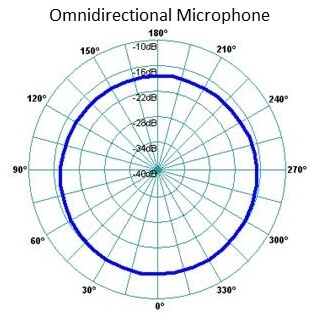
2. Unidirectional microphone: It is a type of microphone that can pick up sound in one direction only. Thus, it can record the voice when you speak in the correct direction. This type of microphone is beneficial when a user wants to record their voice during a podcast or voice-over. Its polar plot shows that it receives maximum sound when the user speaks in front of it. As shown in the below image: 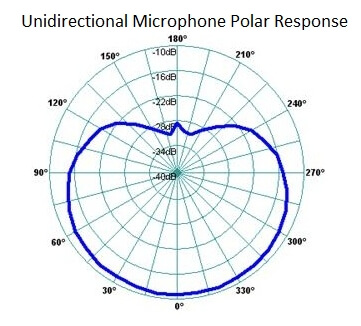
3. Close-talk microphone: It is another type of microphone in which you have to keep your mouth close to the microphone without making any noise or sound that usually happens with other microphones. These microphones are used with the phones, headset as well as voice-recognition software. It provides excellent voice quality for fixed station applications. Additionally, it includes a feature hum-bucking coil to reduce unnecessary sound and increase quality for voice communications. 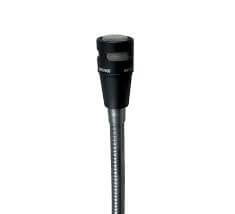
4. Bidirectional microphone: It is also known as figure-of-eight microphones designed to pick up the sound with high sensitivity from the front and backside of the microphone. It is useful when interviewing a person as you would like to get equally sound from the interviewer and interviewee. The below image shows the bidirectional microphone sound picks up pattern, which shows that it picks up equally part of the sound of the front and backside. 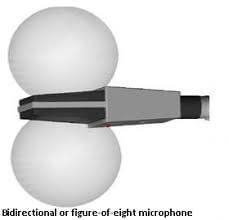
5. Clip-on microphone: It is also called lavalier, lapel mic, body mic, neck mic, collar mic, or personal mic. It is a small hands-free wireless mic that is used to allow hands-free operations such as theatre, television, and public speaking. These are mainly used by attaching to ties, collars, shirts, or other clothing. How does a microphone input data into a computer?A microphone is an input device; it sends information to the computer. For example, when it is used to record music or sound, the information (a record) is stored on the computer in response to play in the future. Furthermore, microphones are important for voice recognition technology, which takes your voice as an input and specifies the computer what operation to be performed. Different Parts of a MicrophoneYou can purchase below given components of the microphone independently; therefore, if your microphone gets any issue to work, this guide will help you to determine what part you should change through which you can fix your problem instead of purchasing a new microphone. A microphone contains several parts to work efficiently; such are as follows:
How to check if a computer has a microphone or not?There are commonly two types of computer microphones: Internal and External. Internal Microphones: Although it is some difficult to see the internal microphones in the computer, as it can be in the form of small holes under the bezel of the computer monitor, or anywhere on the body of the laptop. On the other hand, they commonly have the word 'Mic' or a small picture of a microphone to indicate the location of a microphone on the computer or laptop. External Microphones: These microphones can be purchased separately and plugged into the computer. If you do not have a USB port or sound card to connect the microphone, you cannot use an external microphone. The sound card is where you attach the external speaker, and it is located on the back of the computer.
Next TopicComputer Fundamentals Tutorial
|
 For Videos Join Our Youtube Channel: Join Now
For Videos Join Our Youtube Channel: Join Now
Feedback
- Send your Feedback to [email protected]
Help Others, Please Share










